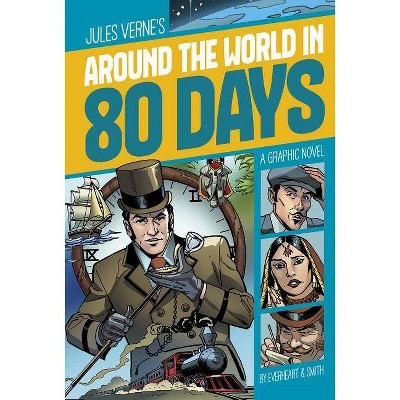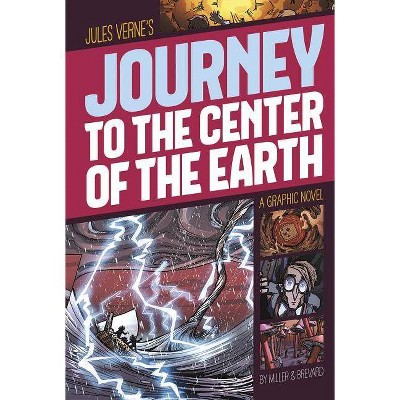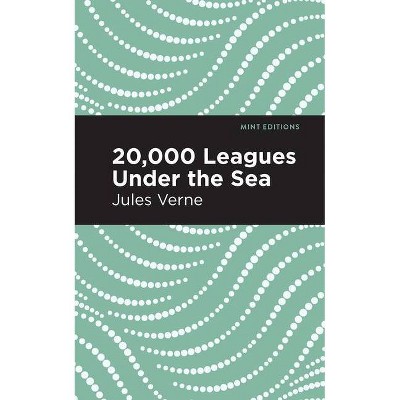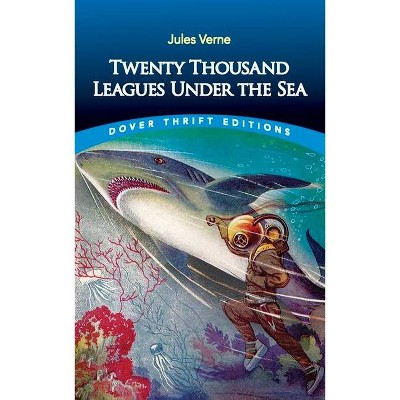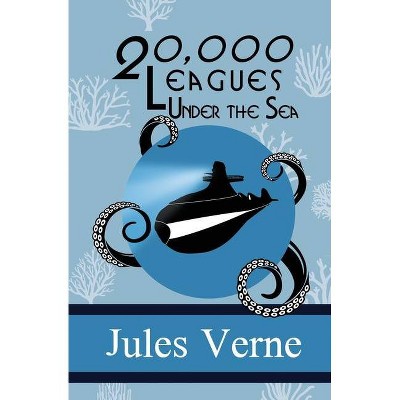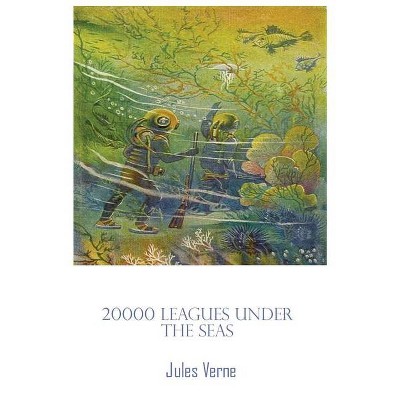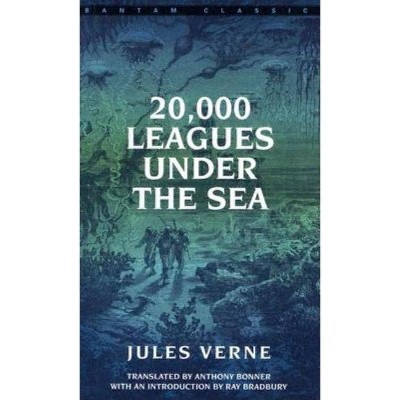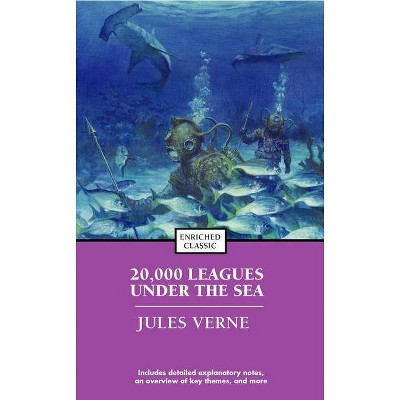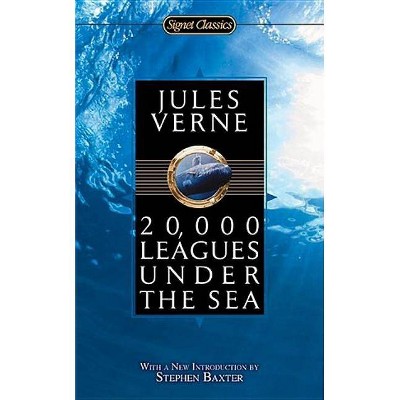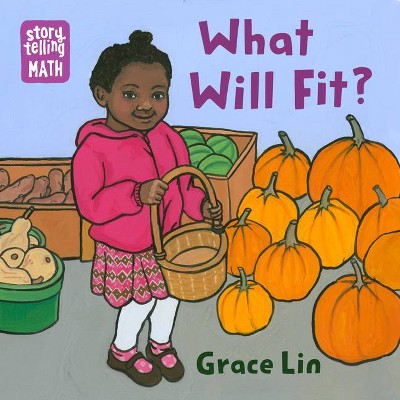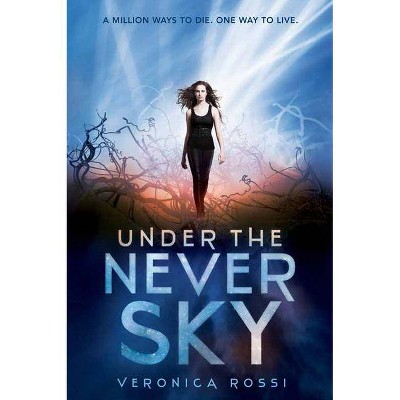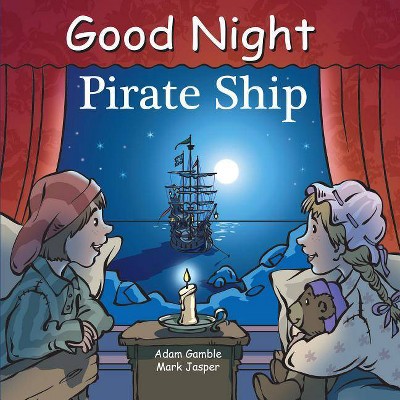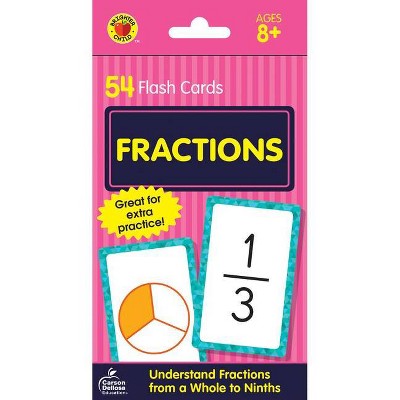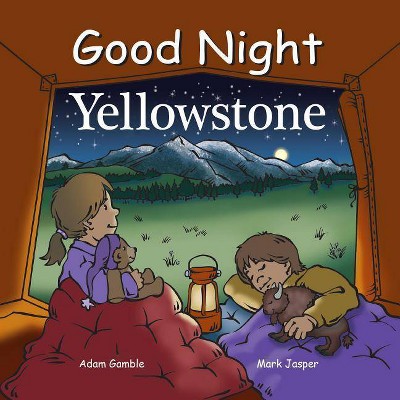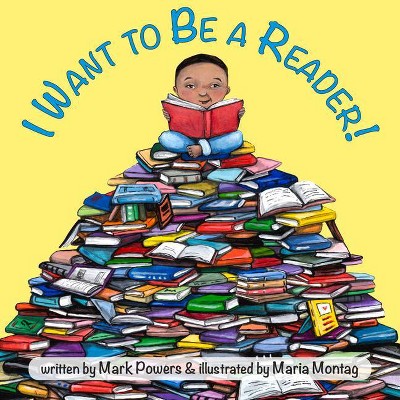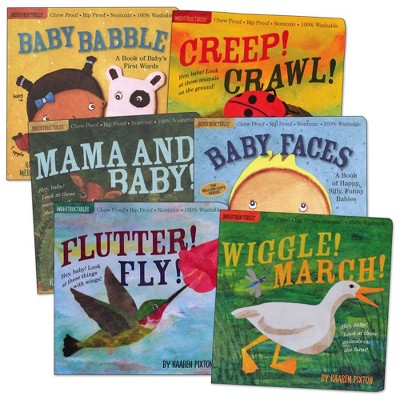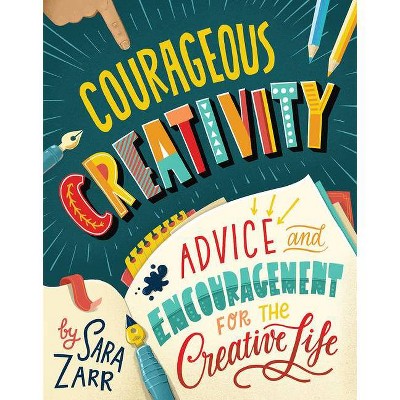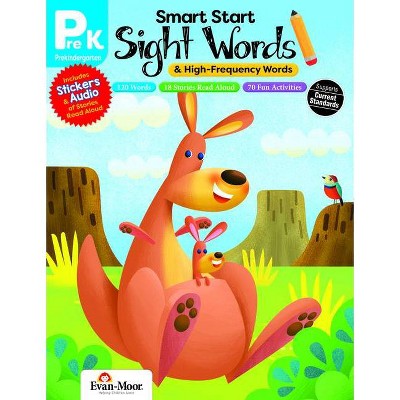20,000 Leagues Under the Sea - (Graphic Revolve: Common Core Editions) by Jules Verne (Paperback)
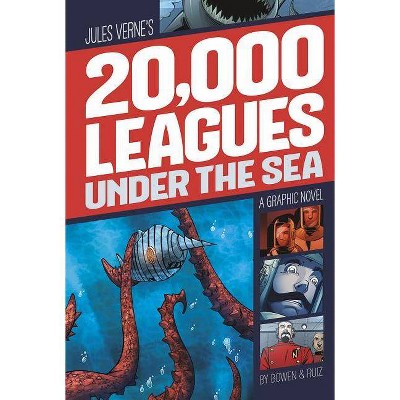
Similar Products
Products of same category from the store
AllProduct info
<p/><br></br><p><b> About the Book </b></p></br></br>Scientist Pierre Aronnax and his trusty servant set sail to hunt a sea monster. With help from the world's greatest harpooner, the men discover that the creature is really a high-tech submarine with a mysterious leader, Captain Nemo.These reader-favorite tiles are now updated for enhanced Common Core State Standards support, including discussion and writing prompts developed by a Common Core expert, an expanded introduction, bolded glossary words and dynamic new covers.<p/><br></br><p><b> Book Synopsis </b></p></br></br>Scientist Pierre Aronnax and his trusty servant set sail to hunt a sea monster. With help from the world's greatest harpooner, the men discover that the creature is really a high-tech submarine with a mysterious leader, Captain Nemo. These reader-favorite tiles are now updated for enhanced Common Core State Standards support, including discussion and writing prompts developed by a Common Core expert, an expanded introduction, bolded glossary words and dynamic new covers.<p/><br></br><p><b> Review Quotes </b></p></br></br><br>A monster has appeared at sea, a monster that can cross oceans and, seemingly, continents, and Pierre Aronnax thinks he knows its origins. But when he and two friends attack the monster, they discover it is actually a great underwater machine, and the real monster is its tortued captain. This adaptation takes advantage of Verne's highly visual wonders and translates them into impressive, effortless panels of danger on -- and beneanth -- the high seas.-- "Teacher Librarian"<br><br>I was curious how they were set up and how the stories were adapted for comics, so I started with the titles where I've read the originals and am most familiar with the source material. Gulliver's Travels, Treasure Island and 20,000 Leagues Under the Sea. All three comics were adapted by different writers and artists with varying degrees of skill and in markedly different styles. Which, given the differences in the source material, only makes sense. I should probably also note that these three books, I believe, were created earlier in the series (all have 2008 copyrights) and publisher Stone Arch has continued since then with other titles. (The latest are Aladdin and the Magic Lamp, Ali Baba and the Forty Thieves, The Fisherman and the Genie and The Seven Voyages of Sinbad.) Naturally, when you're trying to condense books down for younger audiences, much of the nuances and subtleties are going to be overlooked. Jonathan Swift's social commentary is unsurprisingly absent, as is much of the character interplay from Robert Louis Stevenson and the scientific details from Jules Verne. The adapters are trying to distill down the stories to something that's comprehensible to a 10 year old, who generally don't have the life experience to fully comprehend much of the subtexts. Which means that these stories tend to focus on the more action-oriented parts of the originals. Gulliver getting captured by giants, Jim Hawkins in a one-on-one fight against Israel Hands, the crew of the Nautilus defending themselves against giant squid, etc. In a lot of respects, it's the same thing that happens when movies are made from these books. What was also noticeable (to me) in these books is that they've gone through some measure of sanitation for youngsters. That scene where Gulliver describes just how ugly human skin looks where you're really examining it closely? Gone. Nemo's attacks against slave traders? Gone. The descriptions of Long John Silver's other duties as cook? Gone. The few deaths that are left occur off-panel. This all largely done without any hugely significant impact to the storytelling itself. Of the three I've read so far, Treasure Island seems to suffer the most from this treatment; it certainly remains coherent, but it's not as elegantly handled as the others. I was a little disappointed with 20,000 Leagues as well, since it almost completely glosses over Nemo's motivations. This doesn't impact the story if you're unfamiliar with it, but it does render Nemo rather flat as a character. Some of the edits, of course, have to do with space considerations. Trying to condense a several hundred page book of prose down to 72 pages of illustrations ain't easy, after all! I think Gulliver's Travels is the most successful in this regard by completely dropping the last half of the book, instead of trying to eliminate bits and pieces throughout the entirety of the text. The way Swift had written the original (as essentially four almost stand-alone adventures) it's obviously easier to do that here than with others, but there's a note at the end specifically stating that further tales are in the original. The original books these stories come from remain literary classics for a variety of reasons. They're worth reading. They're worth getting kids interested in. These books from Stone Arch could easily be useful in that regard. Do they replace the originals? Of course not, but that's hardly the intent. If you read these, you'll have just as solid an understanding of the books as any of the movie versions of the same stories. We're not looking at high art here; we're looking at a teaser to get people (mainly kids) interested in high art. And while they probably wouldn't be found in (or possibly even suitable for) your local comic shop, these are certainly worthy of discovery in the children's book section of your local big box bookstore. http: //kleefeldoncomics.blogspot.com/2010/11/graphic-revolve-classic-fiction-series.html-- "Kleefeld on Comics Blog"<br><br>Red-uniformed officers of the Nautilus stand in stark contrast to their undersea world rendered in a blue-and-gray palette. With simplified text, Professor Aronnax narrates this encounter with Captain Nemo, his fantastic underworld, and the giant squid. Back matter suitable for classrooms is included in this introduction to the science-fiction classic.-- "School Library Journal"<br><br>This graphic novel makes a classic work accessible to younger readers, in a suspenseful and visually stimulating format.-- "San Diego Unified School District"<br><br>This 26-title set features dynamic comic-style art and abridged retellings of both myths and literature classics. Titles include The Jungle Book, The Wizard of Oz, Pinocchio, and Alice in Wonderland (all 2010), among others.-- "Book Links"<br>
Price History
Price Archive shows prices from various stores, lets you see history and find the cheapest. There is no actual sale on the website. For all support, inquiry and suggestion messagescommunication@pricearchive.us
